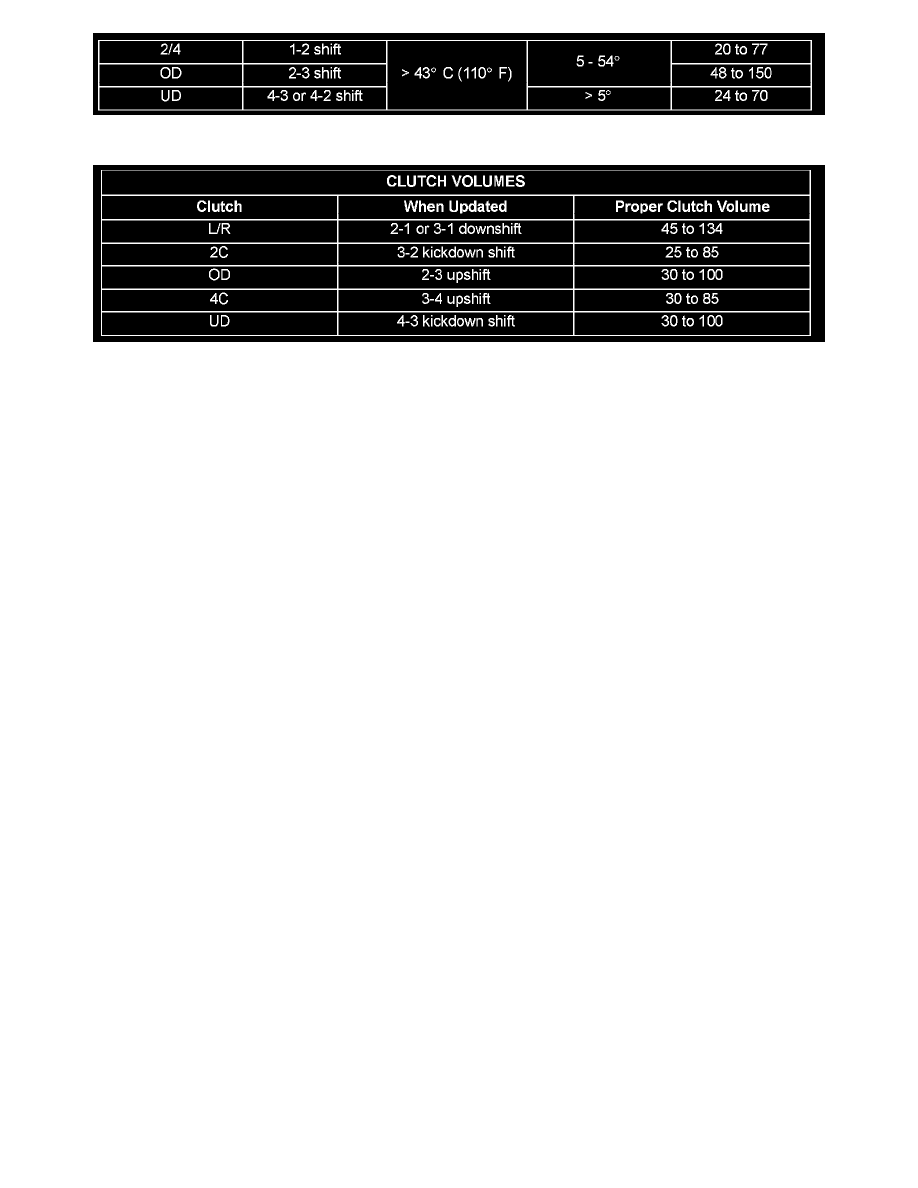Raider V6-3.7L SOHC (2006)

42RLE Part 2
545RFE
The TCM monitors gear ratio changes by monitoring the Input and Output Speed Sensors. The Input, or Turbine Speed Sensor sends an electrical
signal to the TCM that represents input shaft rpm. The Output Speed Sensor provides the TCM with output shaft speed information.
By comparing the two inputs, the TCM can determine transmission gear position. This is important to the CVI calculation because the TCM
determines CVIs by monitoring how long it takes for a gear change to occur.
Gear ratios can be determined by using the Scan Tool and reading the Input/Output Speed Sensor values in the "Monitors" display. Gear ratio can
be obtained by dividing the Input Speed Sensor value by the Output Speed Sensor value.
For example, if the input shaft is rotating at 1000 rpm and the output shaft is rotating at 500 rpm, then the TCM can determine that the gear ratio
is 2:1. In direct drive (3rd gear), the gear ratio changes to 1:1. The gear ratio changes as clutches are applied and released. By monitoring the
length of time it takes for the gear ratio to change following a shift request, the TCM can determine the volume of fluid used to apply or release a
friction element.
The volume of transmission fluid needed to apply the friction elements are continuously updated for adaptive controls. As friction material wears,
the volume of fluid need to apply the element increases. Certain mechanical problems within the input clutch assembly can cause inadequate or
out-of-range element volumes. Also, defective Input/Output Speed Sensors and wiring can cause these conditions. The following charts identifies
the appropriate clutch volumes and when they are monitored/updated:
Shift Schedules
As mentioned earlier, the TCM has programming that allows it to select a variety of shift schedules. Shift schedule selection is dependent on the
following:
-
Shift lever position
-
Throttle position
-
Engine load
-
Fluid temperature
-
Software level
